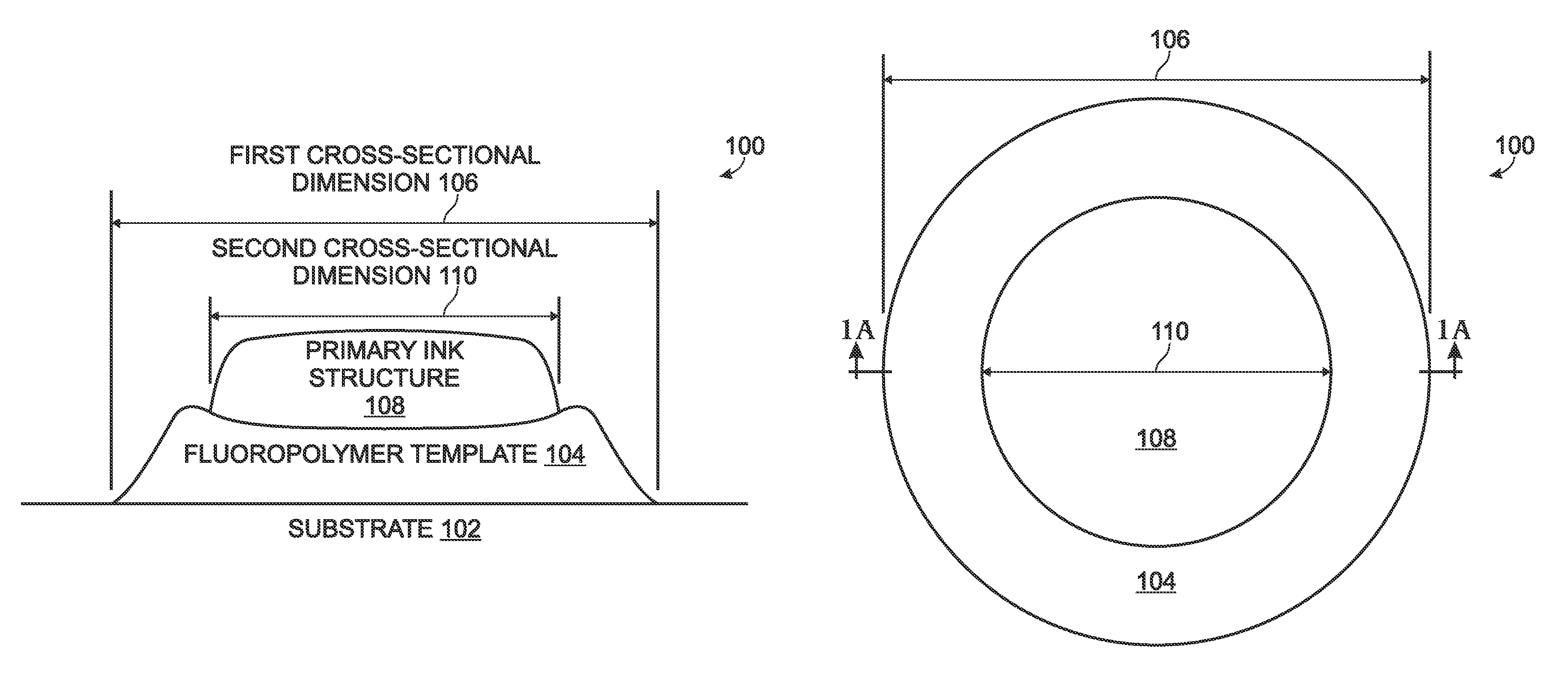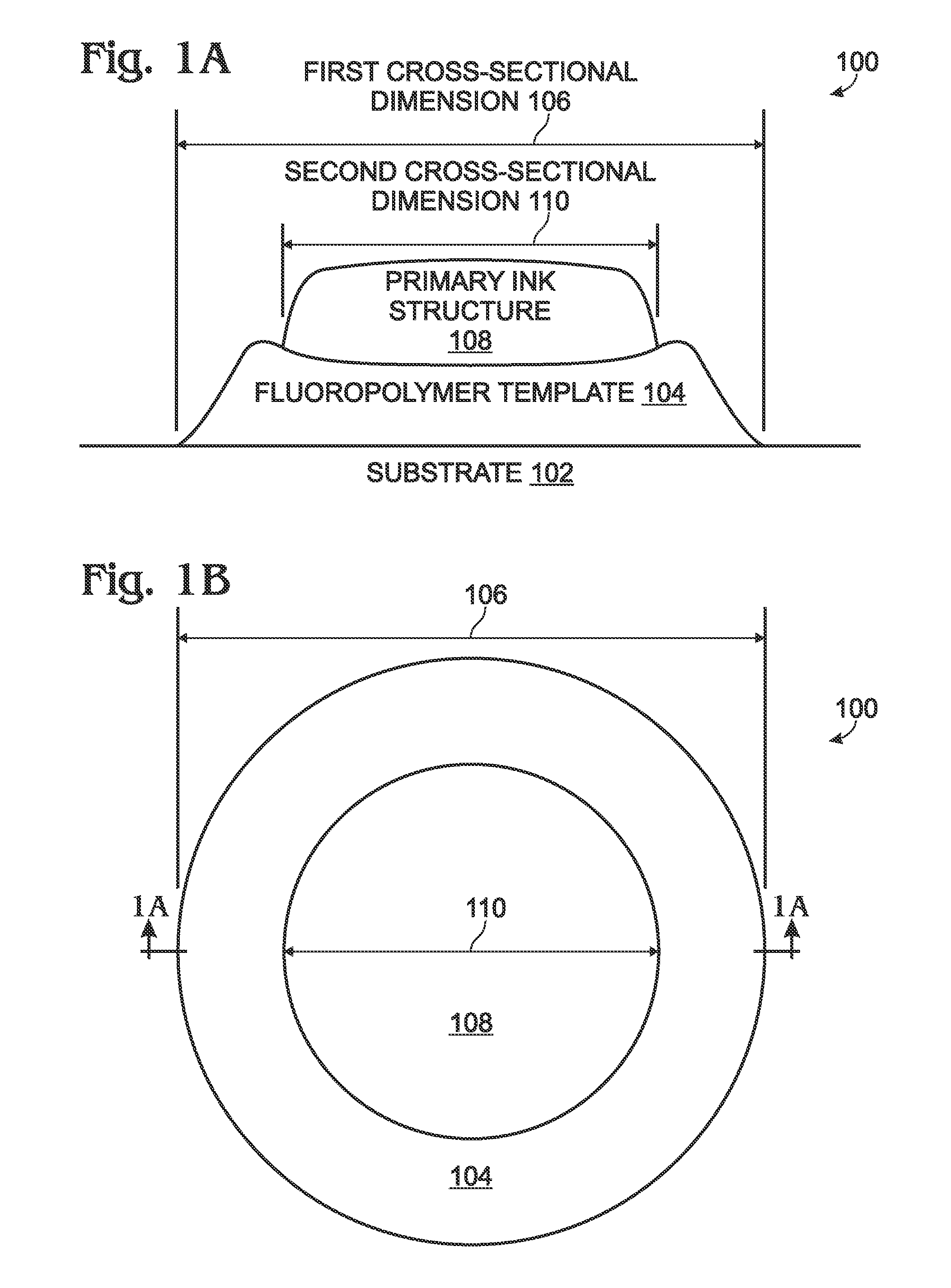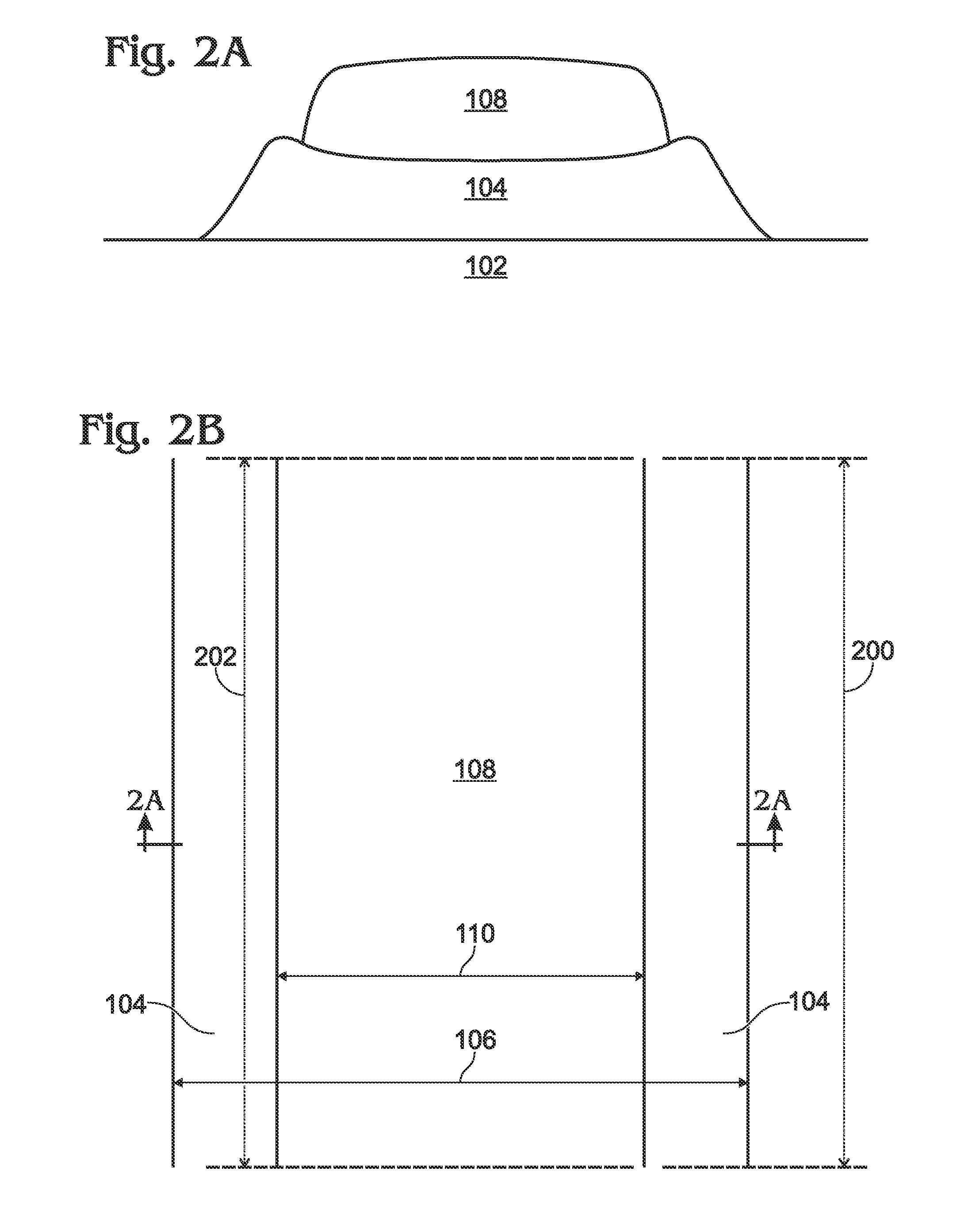Controlling printed ink line widths using fluoropolymer templates
a template and printed ink technology, applied in the field of integrated circuit (ic) fabrication, can solve the problems of difficult reduce so as to increase the conductivity of printed metal lines, increase the line width, and add significant thickness to printed conductive lines
- Summary
- Abstract
- Description
- Claims
- Application Information
AI Technical Summary
Benefits of technology
Problems solved by technology
Method used
Image
Examples
Embodiment Construction
[0022]FIGS. 1A and 1B are, respectively, partial cross-sectional and plan views of a printed ink structure with a controlled horizontal cross-sectional area. The printed ink structure 100 comprises a substrate 102 and a fluoropolymer template 104 overlying the substrate 102. The fluoropolymer template 104 has a horizontal first cross-sectional dimension 106. A primary ink structure 108 overlies the fluoropolymer template and has a horizontal second cross-sectional dimension 110 less than the first cross-sectional dimension 106. In some aspects as shown, the fluoropolymer template 104 has a coffee stain pattern in the first cross-sectional dimension 106. As used herein, a coffee stain pattern is understood to a film of material with a greater thickness of material around the edge of the pattern than in the center. In other words, a coffee stain pattern resembles a pattern of spilled coffee underlying a coffee cup, after the coffee has dried. However, it should be understood that the ...
PUM
| Property | Measurement | Unit |
|---|---|---|
| width | aaaaa | aaaaa |
| water contact angle | aaaaa | aaaaa |
| height | aaaaa | aaaaa |
Abstract
Description
Claims
Application Information
 Login to View More
Login to View More - R&D
- Intellectual Property
- Life Sciences
- Materials
- Tech Scout
- Unparalleled Data Quality
- Higher Quality Content
- 60% Fewer Hallucinations
Browse by: Latest US Patents, China's latest patents, Technical Efficacy Thesaurus, Application Domain, Technology Topic, Popular Technical Reports.
© 2025 PatSnap. All rights reserved.Legal|Privacy policy|Modern Slavery Act Transparency Statement|Sitemap|About US| Contact US: help@patsnap.com



